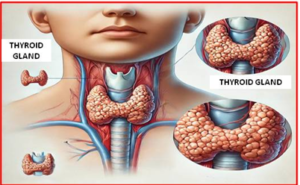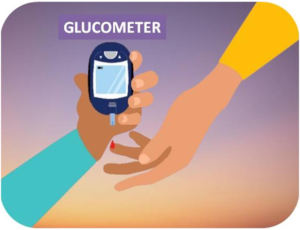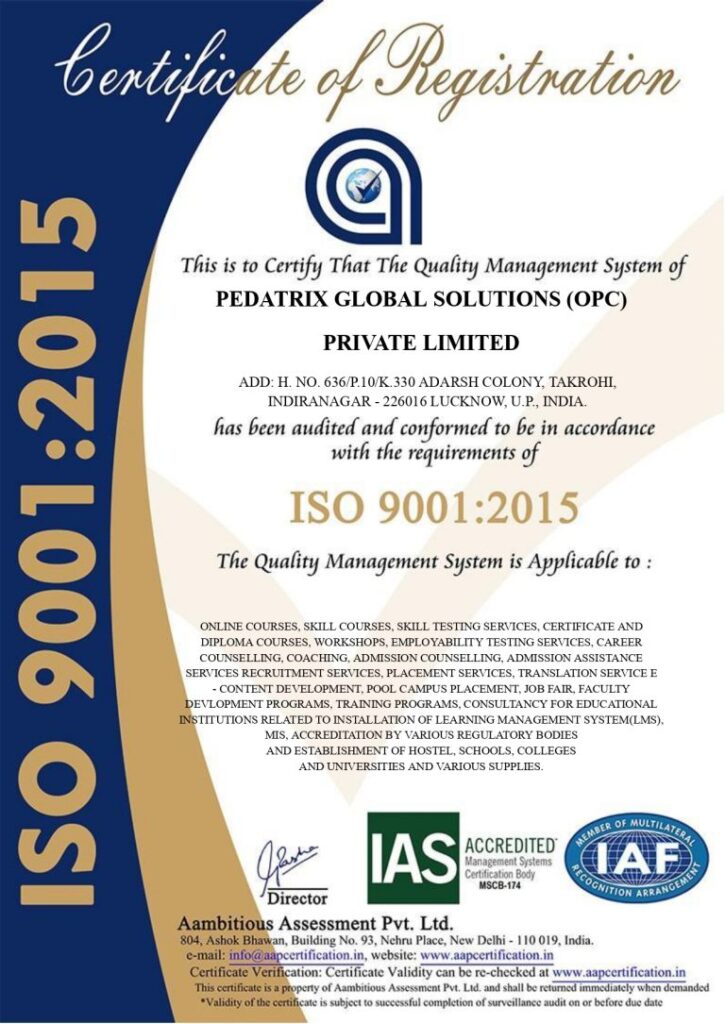INTRODUCTION
The thyroid gland is an endocrine organ found in vertebrates. In humans, the thyroid is located in the neck and made up of two lobes that are connected. A thin band of tissue, known as the isthmus, unites the lower two-thirds of the lobes. The thyroid is a butterfly-shaped organ situated in the neck just below the Adam’s apple. In adults, the thyroid gland weighs approximately 25 grams, with each lobe measuring about 5 cm in length, 3 cm in width, and 2 cm in thickness, while the isthmus is roughly 1.25 cm in both height and width. The functional unit of the thyroid gland is the thyroid follicle, a spherical structure lined with follicular cells (thyrocytes) and occasional parafollicular cells, surrounding a lumen filled with colloid. Thyroid hormones are synthesized and stored within the thyroid follicles of the thyroid gland. The C-cells that secretes calcitonin in the thyroid gland are derived from either ultimo-branchial cells or adjacent neural cells. (1)
Thyroid-releasing hormone (TRH) is released by the hypothalamus and stimulates the thyrotrophs in the anterior pituitary to produce thyroid-stimulating hormone (TSH). Thyroid-stimulating hormone (TSH), released from the anterior pituitary, encourages thyroid follicular cells to release 80% thyroxine (T4) and 20% triiodothyronine (T3). The formation of thyroid hormones depends on iodide availability, TSH activation, and tyrosine residues within thyroglobulin (TG). The conversion of T4 to T3 occurs in the bloodstream through deiodination. TSH levels are reduced when T3/T4 concentrations are high, and they rise when T3/T4 levels are low, due to negative feedback. (2)
Thyroid hormones play a key role in controlling metabolism, protein synthesis, and the growth and development of children. Calcitonin is involved in maintaining calcium balance in the body. Common thyroid disorders include hyperthyroidism, hypothyroidism, inflammation of the thyroid (thyroiditis), goitre, nodules, and cancer.
The primary cause of hyperthyroidism is Graves’ disease, an autoimmune disorder that leads to excessive thyroid hormone secretion. In hypothyroidism, there is inadequate production of thyroid hormones, primarily caused by iodine deficiency. In regions where iodine deficiency is common, hypothyroidism is the primary preventable cause of intellectual disabilities in children.The autoimmune disease Hashimoto’s thyroiditis is the leading cause of hypothyroidism in regions with adequate iodine levels.
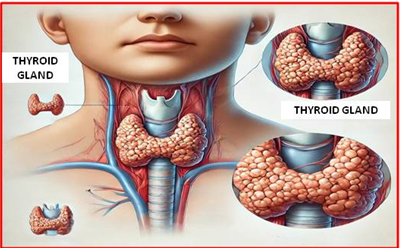
Thyroid Functions and Its Impact on Metabolism, Growth and Development in Human Body
The main function of the thyroid gland is the synthesis of iodine-containing hormones, namely triiodothyronine (T3) and thyroxine (T4), as well as the secretion of calcitonin. The name T3 reflects the presence of three iodine atoms in its molecular structure, while T4 has four iodine atoms per molecule. The thyroid hormones exert a variety of effects throughout the human body, such as:
- Metabolic: The thyroid hormones accelerate the basal metabolic rate and affect almost all the body’s tissues. The thyroid hormones regulate appetite, nutrient absorption, and gastrointestinal motility. They enhance glucose absorption in the gut, as well as its generation, cellular uptake, and breakdown. Additionally, they promote fat breakdown and raise free fatty acid levels. Despite increasing free fatty acids, thyroid hormones lower cholesterol levels, potentially by boosting its secretion in bile.
- Cardiovascular: These hormones elevate both the rate and force of the heartbeat, as well as the rate of breathing, oxygen intake, and consumption. They also enhance mitochondrial activity. Together, these effects boost blood circulation and raise body temperature.
- Developmental: Thyroid hormones are essential for normal development, stimulating the growth rate in younger individuals. Developing brain cells are a key target for T3 and T4 hormones. These hormones are especially important for brain maturation during fetal development and the early years after birth.
- The thyroid hormones play a key role in maintaining sexual function, sleep, and cognitive patterns. Higher thyroid hormone levels are related to faster thought generation but reduced attention span. These hormones also affect sexual function, including libido and menstrual cycle regulation.
Disorders Related To Thyroid
- Hyperthyroidism:
Hyperthyroidism can result in Graves’ disease, which manifests in symptoms like excessive sweating, irregular heartbeats, weight loss, protruding eyes, and nervousness.
- Hypothyroidism:
Symptoms of hypothyroidism can involve fatigue, weight gain, mood disorders, abnormal bone formation, and growth issues, usually due to autoimmune antibodies attacking the thyroid. In newborns and infants, hypothyroidism can lead to intellectual disabilities and stunted growth due to insufficient thyroid hormones. Regular thyroid tests are conducted for babies, with immediate treatment starting if levels are low. The causes of hypothyroidism in both infants and adults are the same:
- Pituitary disorders
- A defective thyroid
- A missing thyroid gland
- Hashimoto’s Thyroiditis:
In Hashimoto’s thyroiditis, the thyroid gland becomes inflamed due to an autoimmune reaction, sometimes causing a goiter and other symptoms.
- Thyroid Tumors:
Thyroid adenomas and nodules are benign growths that begin in the cells lining the inner surface of the thyroid. Some adenomas can secrete thyroid hormones and result in hyperthyroidism. Treatment often involves surgery to remove the overactive nodule.
- Thyroid Cancer:
People who have received radiation treatment to the head, neck, or chest have a higher risk of thyroid cancer, but it can also occur in those with no clear risk factors. The four main types of thyroid cancer are papillary, follicular, anaplastic, and medullary. The outlook for most thyroid cancer patients is positive.
- Hypothyroidism and Pregnancy :
The transfer of thyroid hormones from the mother to the fetus is vital for normal growth and brain development. Hypothyroidism in pregnant women can be safely treated with thyroid hormone therapy
- Postpartum Thyroiditis:
Postpartum thyroiditis occurs when the thyroid gland becomes inflamed after delivery, potentially causing hyperthyroidism or hypothyroidism. Treatment with medication is effective, and around 80% of cases resolve after 12 to 18 months
Treatment and Management of Thyroid Disorders
Hypothyroidism: Levothyroxine, often prescribed under names like Levo-T and Synthroid, is taken daily by mouth to treat hypothyroidism by stabilizing thyroid hormone levels and reducing symptoms.
Hyperthyroidism: Multiple options are available for treating hyperthyroidism, and the ideal choice will vary based on your age, overall health, the root cause, and the condition’s severity, as well as your preferences.
1. Anti- thyroid medicine: Medicines like methimazole and propylthiouracil gradually reduce hyperthyroidism symptoms by blocking the thyroid’s overproduction of hormones. Treatment typically continues for 12 to 18 months, after which the dose may be reduced or stopped if hormone levels normalize.
2. Beta- blockers: Beta blockers don’t change thyroid hormone levels but it helps in reducing the symptoms like tremors, rapid heartbeat, and palpitations. They’re sometimes prescribed to manage symptoms until hormone levels are stabilized, though they’re usually avoided in people with asthma.
3. Radioiodine therapy: In radioiodine therapy, the thyroid absorbs the radioactive iodine, which causes it to shrink. Taken orally, this treatment can reduce symptoms over a few months but often leads to reduced thyroid function, resulting in hypothyroidism and potentially requiring hormone replacement.
4. Thyroidectomy: It is a surgical procedure that removes part or all of the thyroid gland. While it’s not commonly used for hyperthyroidism, it may be considered for pregnant women or those who cannot take anti-thyroid medications or radioiodine therapy. Risks include potential damage to the vocal cords and parathyroid glands, which regulate calcium levels. After thyroidectomy or radioiodine therapy, individuals need to take levothyroxine (e.g., Levoxyl, Synthroid) for the rest of their lives to provide thyroid hormones. If the parathyroid glands are re
moved, medications will be required to manage calcium levels.
Symptoms of Hypothyroidism and Hyperthyroidism
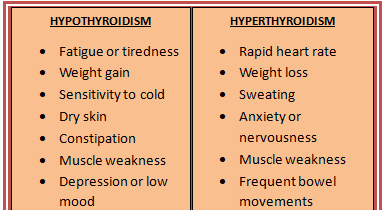
CONCLUSION
In conclusion, thyroid disorders, including hyperthyroidism and hypothyroidism, significantly impact the body’s metabolism, growth, and overall health. These conditions can be caused by autoimmune diseases, iodine deficiencies, or other underlying factors. Effective management through medications, such as levothyroxine for hypothyroidism or anti-thyroid drugs for hyperthyroidism, as well as treatments like radioiodine therapy or surgery, helps in controlling the symptoms and restoring the thyroid functions. Early detection and proper treatment play an important role in preventing complications and maintaining long-term health.
REFERENCES
1. Nussey S, Whitehead S. Endocrinology: An Integrated Approach. BIOS Scientific Publishers; Oxford: 2001. [PubMed]
2. Mariotti S, Beck-Peccoz P. Physiology of the Hypothalamic-Pituitary-Thyroid Axis. In: Feingold KR, Anawalt B, Blackman MR, Boyce A, Chrousos G, Corpas E, de Herder WW, Dhatariya K, Dungan K, Hofland J, Kalra S, Kaltsas G, Kapoor N, Koch C, Kopp P, Korbonits M, Kovacs CS, Kuohung W, Laferrère B, Levy M, McGee EA, McLachlan R, New M, Purnell J, Sahay R, Shah AS, Singer F, Sperling MA, Stratakis CA, Trence DL, Wilson DP, editors. Endotext [Internet]. MDText.com, Inc.; South Dartmouth (MA): Apr 20, 2021. [PubMed




